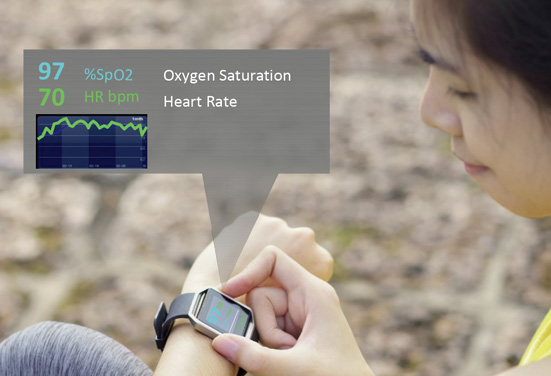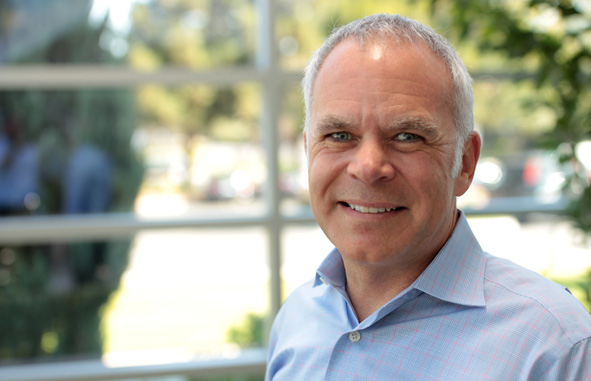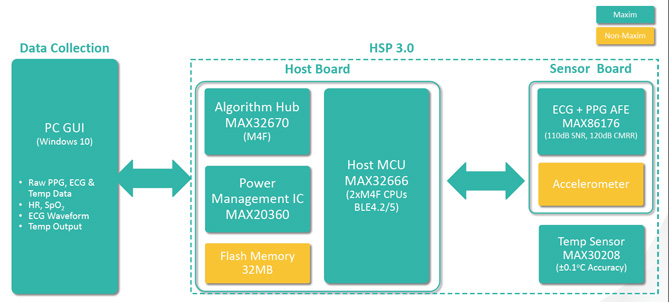You are what you wear
- October 28, 2020
- Steve Rogerson

IMC executive editor Steve Rogerson talks with Andrew Baker from Maxim about trends in wearable health devices.
From smart watches to step counters on our mobile phones, many of us by now have had experience of a wearable device that measures some aspect of our health. And while most of these are aimed at consumers, the signs are this will change dramatically over the coming few years.
There are various trends that are helping that along, not least the desire the keep an increasingly ageing population out of hospital by monitoring them in their home environment and only admitting them when their vital signs show something is going wrong.
The pressure to do this has intensified in recent months due to Covid-19 and the need for medical staff where possible to keep their patients at a distance. This has also intensified the desire to monitor all patients remotely so as to reduce the straining capacity on hospital beds that the pandemic has created.
But what this is also doing is moving a large chunk of the responsibility for care to the cared-for person. And that is probably an irreversible trend that will last a lot longer than this particular coronavirus.

“Healthcare has become personal,” said Andrew Baker, managing director of Maxim Integrated’s industrial and healthcare business unit. “It is making individuals more responsible for their own wellbeing.”
He was speaking at the launch of the company’s latest wrist form factor reference design for a medical wearable, more of which later. He said global healthcare costs were growing and currently represented ten per cent of GDP.
“It is growing at a faster rate than inflation,” he said. “Due to Covid-19, they are looking for contactless ways to provide care.”
In fact, it could be argued that the pandemic could not have arrived at a better time as the consumer wearables industry was already well established and moving to a new level of maturity. The medical authorities were already starting to look seriously at these products for proper clinical care. At the other end of the spectrum, the makers of clinical devices were beginning to incorporate this type of monitoring technology into their products. The medical and consumer worlds were merging and the pandemic has done nothing but accelerate that.
“Wearable consumer devices are becoming more health centric,” said Baker. “This is letting people have more control over their own wellbeing. This is bringing a new dimension to preventative health, bringing it to the masses.”
Let us look at some stats. Last year, there were an estimated 640 million medical or healthcare wearable devices shipped. Omdia Healthcare predicts this will grow at a CAGR of 22 per cent to top one billion in 2023.
One of the biggest growing uses of wearables is for detecting atrial fibrillation, or an unusual heart beat. As someone who has suffered from this in the past, I am quite happy that my Apple Watch will now check for that. And it is a biggy as it increases the risk of stroke by some five times and about half those with AFib don’t know they have it. If a wearable can detect this earlier and get people checked out, then this is a real life saver.
Another growing use for wearables is managing chronic diseases such as diabetes. This is a huge global problem and yet nearly half remain undiagnosed. Glucose monitoring wearables are helping keep an eye on those with the disease.
So this brings us back to Maxim. The California-based company first brought out a health sensor platform to work as a reference design back in 2016. This was a circuit board. Two years later, it updated this to a reference design for a wrist-based wearable. The latest version – HSP 3.0 – came out this month. It can measure a range of vitals such as blood oxygen saturation, heart rate, body temperature, sleep quality and stress levels. It can also perform an ECG.
Though the range is impressive, with blood oxygen and ECG the latest additions, it is temperature that Baker believes is still the key.
“Temperature is the most important vital sign,” he said. “It can be used to detect infectious diseases as well as monitoring fever.”

Maxim HSP 3.0 system block diagram
The idea behind a reference design is to speed up time to market for companies designing wearables. They can use this to start collecting data immediately saving maybe up to six months development time over those starting from scratch.
“The biggest growth sector is health-enabled smart watches,” said Baker. “The biggest wave is consumer devices because time to market is quicker but in the future there will be more demanding general applications. A lot of consumer companies are getting regulatory clearance, initially on AFib. The regulatory bodies are keeping a close eye on this. Our focus is on FDA and CE regulated use cases.”
I think wearable devices, medical or otherwise, represent one of the most exciting fields in technology today. They are bringing a world once only dreamed about by science fiction writers into reality. They are changing people’s lives for the better and this trend will only grow. I can’t wait to see what the next few years have in store, once we get through this pesky pandemic of course.





